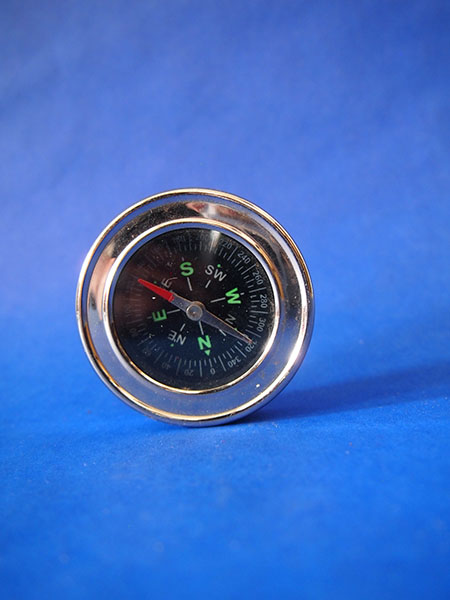![]() body | color | collections | commodity | cube | document | fabric | fetish | gender | glass | home | identity | living | machine | metal | minimal | mobility | narrative | olfactory | organic |
body | color | collections | commodity | cube | document | fabric | fetish | gender | glass | home | identity | living | machine | metal | minimal | mobility | narrative | olfactory | organic |
![]() pain | paper | plastic | plugs | power | protective | rectangular | ritual | round | sound | souvenir | spiritual | style | text-based | time | tool | touch | uniform | value | visual | warm | wood
pain | paper | plastic | plugs | power | protective | rectangular | ritual | round | sound | souvenir | spiritual | style | text-based | time | tool | touch | uniform | value | visual | warm | wood
| Magnet: Compass | |||
Narrative: Silver Compass with red tip signaling north, green and silver markers on black background. Iron ore, coke, and limestone are heated in a blast furnace by hot pressurized air. The coke releases heat, which melts the ore, and carbon monoxide, which reacts with iron oxides in the ore to release iron. The limestone reacts with impurities in the ore such as sulfur to form slag, which floats on the molten iron and is removed. The product of this process is pig iron, which contains about 90% iron, 3-5% carbon, and various impurities. To remove the impurities and most of the carbon, oxygen is blasted into the molten pig iron under high pressure. The impurities are released as slag and the carbon is released as carbon monoxide. The remaining molten steel is poured into molds and allowed to cool into ingots weighing thousands of pounds each. The ingots are heated to about 2,200° F (1,200° C) and rolled between grooved rollers to form slabs. The slab is cut with giant shears, reheated, and rolled again until it is the proper thickness for needles. The thin sheet of steel is then stamped with a sharp die in the shape of the needle. The process is repeated to produce many needles from a single sheet of steel. The needles are shipped from the steel manufacturer to the compass manufacturer. At the compass factory, the needles are inserted by hand into holders on an automated turntable. As the turntable spins the "North" end of the needle is sprayed with red paint and the "South" end of the needle is sprayed with white paint. As the needle continues, it is exposed to a strong magnetic field produced by an electronic magnetizer. The magnetized needles are removed from the turntable and the paint is allowed to dry. The needles may also be baked in an oven to dry the paint. They are then placed in storage until needed for assembly. Polymethyl methacrylate is formed by subjecting a solution of methyl methacrylate to light, heat, or various chemical catalysts. The components of the compass housing are then formed by a process known as injection molding. Polymethyl methacrylate is heated until it melts into a liquid. The molten plastic is then injected into a mold in the shape of the desired product. The mold is allowed to cool, opened, and the solid plastic is removed. The various plastic components are shipped from the plastic manufacturer to the compass manufacturer and stored until needed. When the compass manufacturer receives an order from a wholesaler, the plant manager arranges for the necessary parts to be issued from storage to workers on an assembly line. As the compass progresses along the assembly line, plastic components are snapped together. Some plastic components move through printers, which stamp them with markings such as a company logo, or with scale markings for use with maps. One of the most critical components of a compass is the vial, which holds the needle. The needle is balanced on a pivot to enable it to move freely. Inexpensive compasses may have a steel pivot, but the best compasses have jeweled pivots in order to resist wear. Jeweled pivots are made of very hard materials such as an osmium-iridium alloy and are capped with a material such as artificial sapphire. The vials are dipped in a liquid that will serve as a dampener. A dampener is a substance that causes the needle to come to rest more quickly when it is disturbed. Various liquids are used for dampeners. These liquids must be transparent and must not react with any of the components of the compass. A typical liquid used for this purpose might be a mixture of ethyl alcohol and water. The vials filled with liquid are sealed using sonic welding. This avoids exposing the needle to heat, which could disturb its magnetism. In this process, ultra-sonic waves are used to melt the plastic at the place where the vial is to be sealed. The plastic is then allowed to solidify, forming a tight seal. Assembly of the compass continues as the sealed vial is snapped onto a baseplate. Petroleum refineries; Power generation and supply; Plastics material and resin manufacturing; Coal mining; Alumina refining and primary aluminum production; Other basic organic chemical manufacturing; Oil and Gas extraction; Motor vehicle parts and manufacturing; Truck transportation; Oil and gas extraction; Iron and steel mills. Land use includes: Logging; Forest nurseries, forest products, and timber tracts; Cattle ranching and farming. This compass was a gift given to me by David Darst in 2009, purchased on a trip to southern California. I've carried it with me from Queens to the Waterpod to to Manhattan to Brooklyn. |
|
||
![]()

